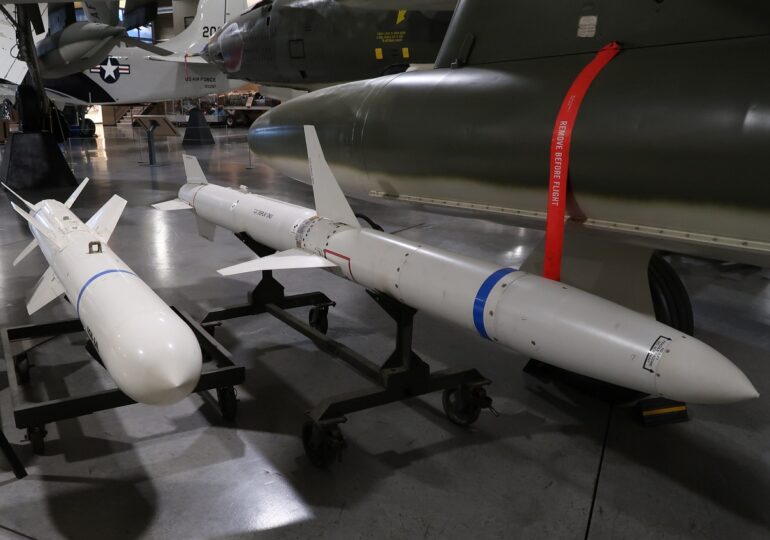Without American support, Europe would be left without a key element necessary to counter a Russian attack. Experts warn that it would take at least ten years to overcome this vulnerability.
If President-elect Donald Trump interrupts the United States’ military cooperation with Europe, as he has threatened, NATO allies on the continent would lose a key capability needed to resist Russian aggression.
This concerns the use of aircraft and weapons to strike air defense systems, an action known as Suppression of Enemy Air Defenses (SEAD). If an army cannot perform this critical mission, its aircraft are vulnerable, unable to strike or protect, leaving ground forces much more exposed and less effective, writes Business Insider.
"One of the most important things missing in Europe is SEAD," said Tim Robinson, a military aviation specialist at the Royal Aeronautical Society in the UK, to the American publication. He stated that although SEAD has "a crucial role," Europe has neglected this defense factor.
Dependence on the USA comes at a cost
There are few dedicated SEAD platforms on the continent. Tornado aircraft from Germany and Italy have AGM-88 HARM munitions for targeting radars and are equipped with the necessary emitter locating system, but they are set to be phased out next year.
Other NATO partners operate F-16 aircraft, which can play a SEAD role, but only US Air Force fighter jets are equipped with the HARM targeting system for better SEAD missions.
American allies in Europe are increasingly looking to replace older aircraft with F-35s, which is commendable, but only a few also acquire AGM-88 missiles, highly suitable for SEAD missions.
Romania has acquired 32 F-35 aircraft set to arrive in the country by 2030, marking the largest contract signed by the Romanian Government through the Ministry of National Defense since the Revolution.
Justin Bronk, an expert from the Royal United Services Institute, wrote early last year that despite the state-of-the-art capabilities of the F-35 stealth aircraft, its mere deployment is not sufficient to cover the SEAD needs of NATO member states.
This situation has left Europe heavily dependent on the USA, an increasingly pressing issue given that the war in Ukraine has shown how crucial it is to neutralize enemy air defense batteries in modern conflict.
In Ukraine, neither side has managed to successfully carry out SEAD operations, putting both air forces at an impasse and forcing ground units to engage in attrition battles resulting in heavy losses, notes the cited publication.
Mattias Eken, an anti-missile defense expert at the RAND Corporation, said an important lesson from the war in Ukraine is that "air forces must be able to find, suppress, and destroy" mobile surface-to-air missiles to achieve air superiority "even against moderately equipped state opponents."
No other Western air force, except the United States, has significant SEAD capabilities, he added. All other NATO forces "have limited penetration resources, ammunition stocks, and experience in operating large mixed attack packages."
Retired American General Gordon Davis, former Deputy Secretary-General of NATO for Defense Investment Division, stated that "in case of aggression, the vast majority of SEAD aircraft will be provided by the USA."
Davis told BI that the USA possesses stealth aircraft, including penetrating bombers, necessary to locate and destroy Russian air defenses, and American aircraft have intelligence capabilities that "NATO would struggle to replace."
He warned that without better SEAD capabilities or US support, NATO "would be under pressure to be effective in a massive Russian aggression."
Experts in warfare at the US Center for Strategic and International Studies wrote in April 2023 that "NATO is now completely dependent on the United States for SEAD capabilities."
Looking ahead, Europe can no longer be 100% certain it can rely on the United States in times of need. Trump has been a strong critic of NATO and in his first term threatened to withdraw from the military alliance if other Alliance members do not spend more on their defense. And recently, he has once again hinted at veiled threats that the USA is considering leaving NATO if allies "do not pay their bills".
Increasing military spending on the continent is not enough to support Ukraine and prepare for Russian threats - Europe still needs the USA, military experts warn.
On the other hand, American forces are now so integrated in Europe that if something happens soon, "they are automatically involved", unless the USA makes a major policy change to bring their troops home, Gordon said.
"The penny dropped" for Europeans
Europe is taking steps to address its deficiencies. A pan-European defense company is now developing a new SPEAR-EW missile.
"I think the penny has dropped," said Robinson, adding that it is not enough. "I think it will take time for all European capitals and perhaps multinational organizations to gain momentum."
Michael Bohnert, a warfare expert at the RAND Corporation, said it could take many years to rebuild a supply chain for the necessary missiles. This means that there are not really good options to cover a short-term deficit if the USA withdraws, he told BI.
Robinson said that Europe has an advanced industrial base, but "the problem is that everything is fragmented."
Rectifying Europe's SEAD deficiencies will take time, during which it will be more vulnerable to attacks. But Russia has shown its inability to effectively use its own assets - a flaw that could ultimately help Europe.
"If there is a war, it will not be Europe's abilities that will save it. But Russia's incapacity," Bohnert added.
T.D.

